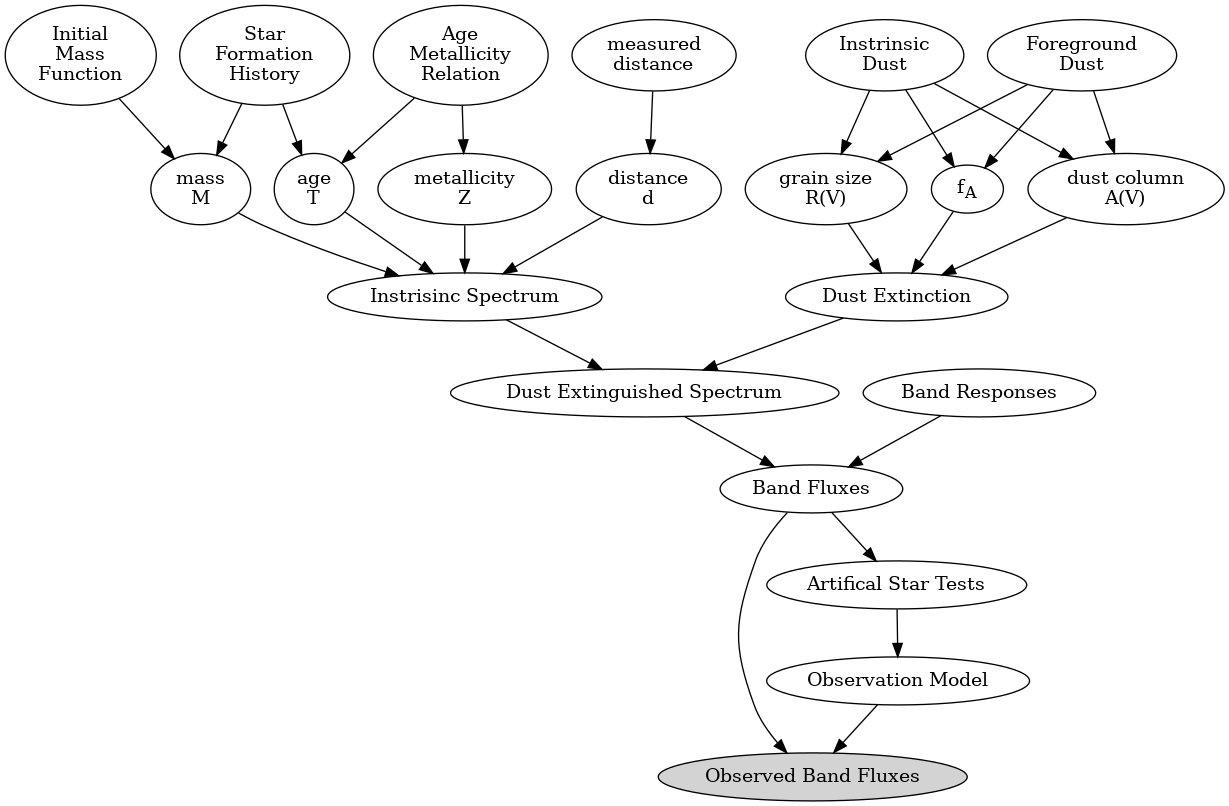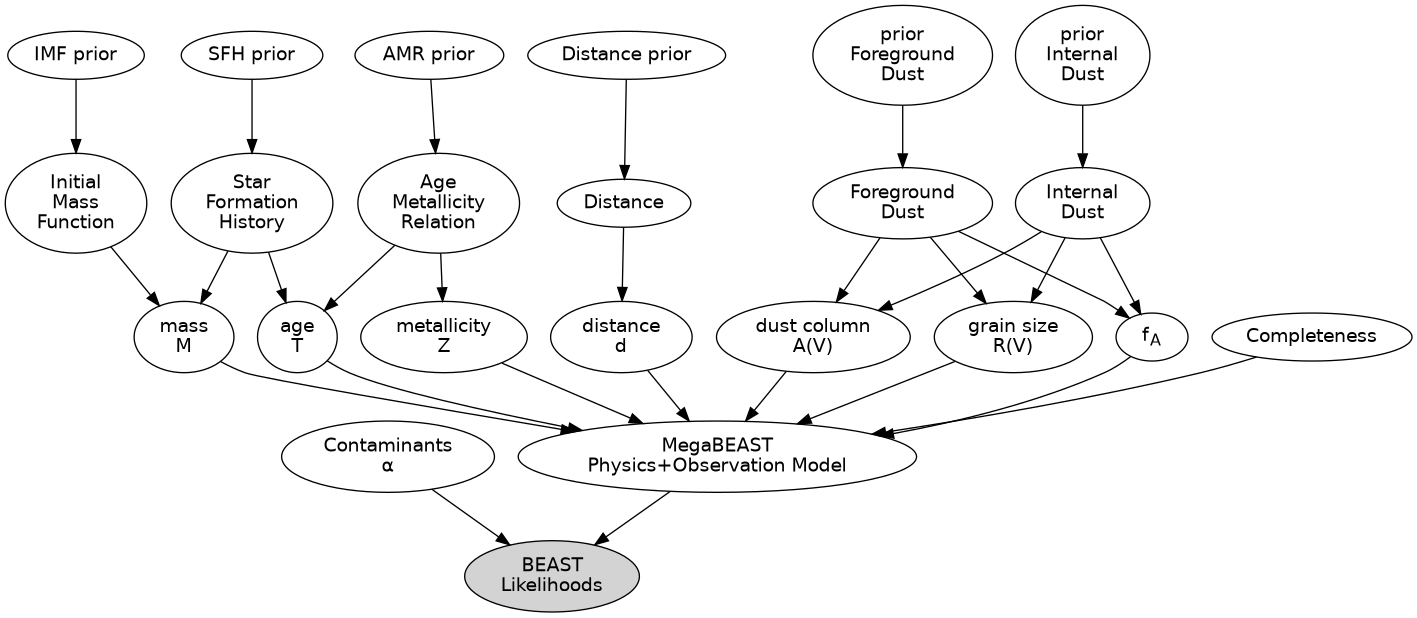PI: Karl Gordon, kgordon@stsci.edu, webpage
Group Website: ISM*@ST
Project Duration: Summer/1 year rotation with potential for thesis project
Project Abstract: I have a number of possible projects that center around the using the BEAST (Bayesian Extinction and Stellar Tool, Gordon et al. 2016, https://github.com/BEAST-Fitting/beast) to fit UV-NIR photometry of individual stars in nearby galaxies. All of these projects included work on the fully open source/development BEAST project. The goal of the BEAST is to use the incredible amount of resolved stellar Hubble (& Webb) data on nearby galaxies to investigate questions about individual stars (common and rare), stellar populations, star/dust geometry, and dust properties in different types of galaxies. Existing data include M31 (PHAT, PHAST), M33 (PHATTER), LMC (Scylla, HTTP), SMC (Scylla, SMIDGE), and many other galaxies (LUVIT). The projects are:
- Improve Stellar Models: The stellar models used in the BEAST are a combination of stellar interiors (evolutionary tracks) and atmosphere models. Updating these models requires some code-refactoring (already started - see https://github.com/BEAST-Fitting/beast/pull/419) and adding in more evolutionary tracks (e.g., MIST, binary evolution) and stellar atmospheres (e.g., BOSZ, new non-LTE Tlusty models). Such improvements need to coded including automated testing and documented. Determining the impact of using different stellar evolutionary tracks/atmospheres using real data would be a critical part of this project.
- Metrics/improvement of model grid: The BEAST is based on a discrete grid of individual dust extinguished star models and evaluating the likelihood over the entire grid. The model stellar model parameters are mass, age, metallicity, and distance. The dust extinction parameters are dust column (Av), average grain size (Rv), and composition (fA). This project would investigate the placement of the grid points in 7 dimensions to minimize the number of points for a set accuracy in sampling the model fluxes of the stars. Metrics would be developed to characterize the accuracy of various possible grid placement schemes. The goal is to improve accuracy of the parameter estimation for a given amount of computation time.
- Binaries: Currently the BEAST only models single stars. Adding binaries is a needed and critical improvement as such stars are common. This project would involved adding in non-interacting physical and apparent binaries, but only where they secondary would significantly effect the primary flux in one of the observed bands. A possible extension would be to include interacting binaries based on the appropriate evolutionary tracks.
- MegaBEAST: An ongoing project is to implement a hierarchical Bayesian model for groups of stars based on the results of the BEAST fitting of individual stars. This is the MegaBEAST (https://github.com/BEAST-Fitting/megabeast). The goal of the MegaBEAST is to determine the stellar (star formation history, age-metallicity relation, etc.) and dust (column, average grain size, etc.) maps of nearby galaxies allowing for the study of each separately and in combination. There are a number of projects possible under this topic, from directly working on the MegaBEAST code to determining probabilistic models of star/dust geometries to testing the calculations using simulations and real data.
Student work:
The work would vary by project with the improving the BEAST/MegaBEAST code, applying the results to real data, analyzing the results, and writing a paper. All the projects should result in a student lead refereed paper and presentation at a meeting. Most can be expanded to a larger (thesis) project included analysis of observations, answering multiple science questions, and writing multiple papers.
BEAST papers:
Yanchulova Merica-Jones, P, et al. 2017, ApJ, 847, 102
Dorn-Wallenstein, T, et al. 2017, ApJ, 850, 86
Kahre, L et al. 2018, ApJ, 855, 133
Lazzarini, M 2018, ApJ, 862, 28
Van De Putte, D. et al. 2020, ApJ, 888, 22
Peters, M. et al. 2020, AJ, 159, 119
Choi, Y. et al. 2020, ApJ, 902, 54
Lazzarini, M. et al. 2021, ApJ, 906, 120
Yanchulova Merica-Jones, P. et al. 2021, ApJ, 907, 50
Telford, O. et al. 2021, ApJ, 922, 191
BEAST model for a single star in an external galaxy
Many stars measured in Nearby Galaxies (M31, M33, LMC, SMC, etc.)
BEAST graphical model
MegaBEAST graphical model




